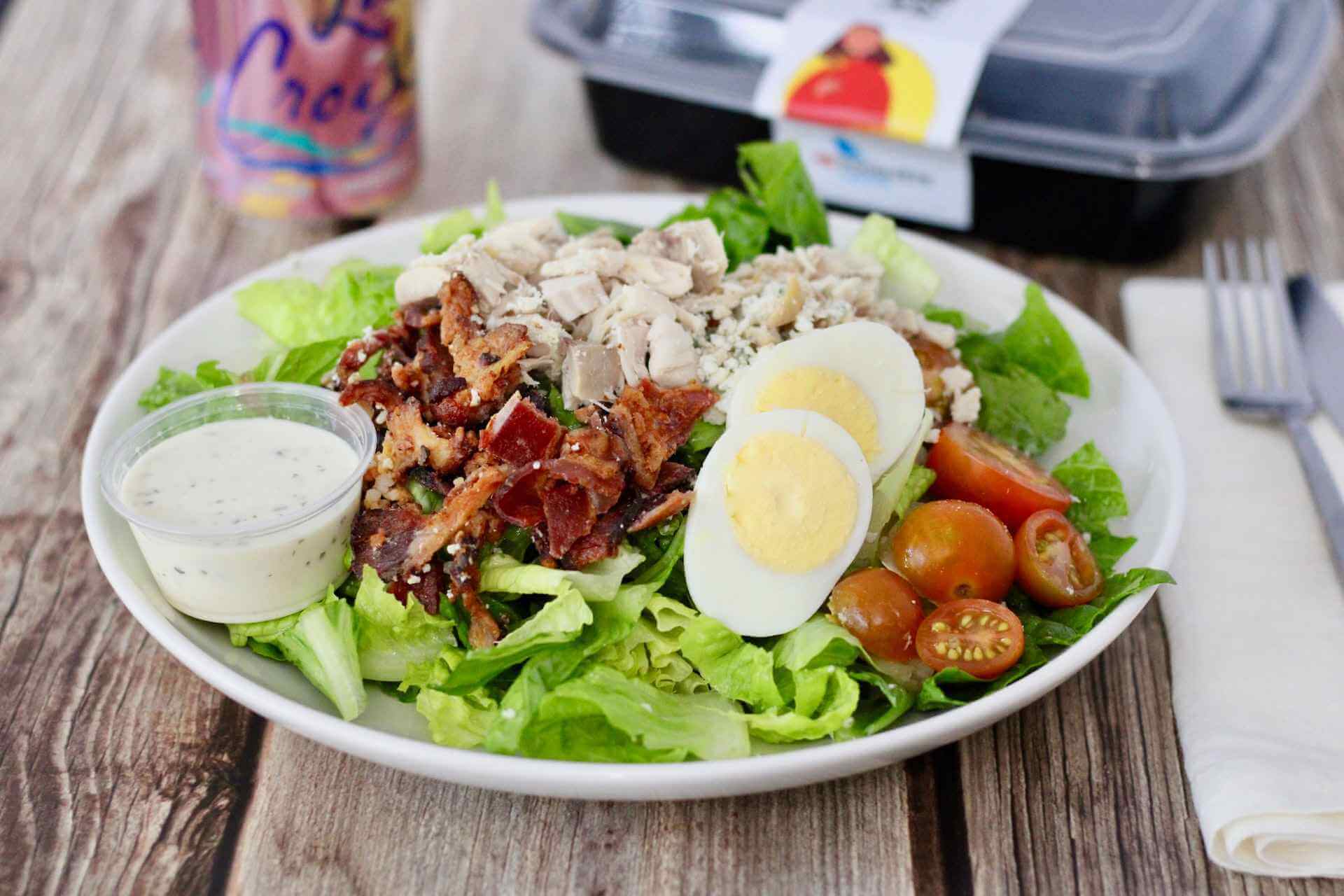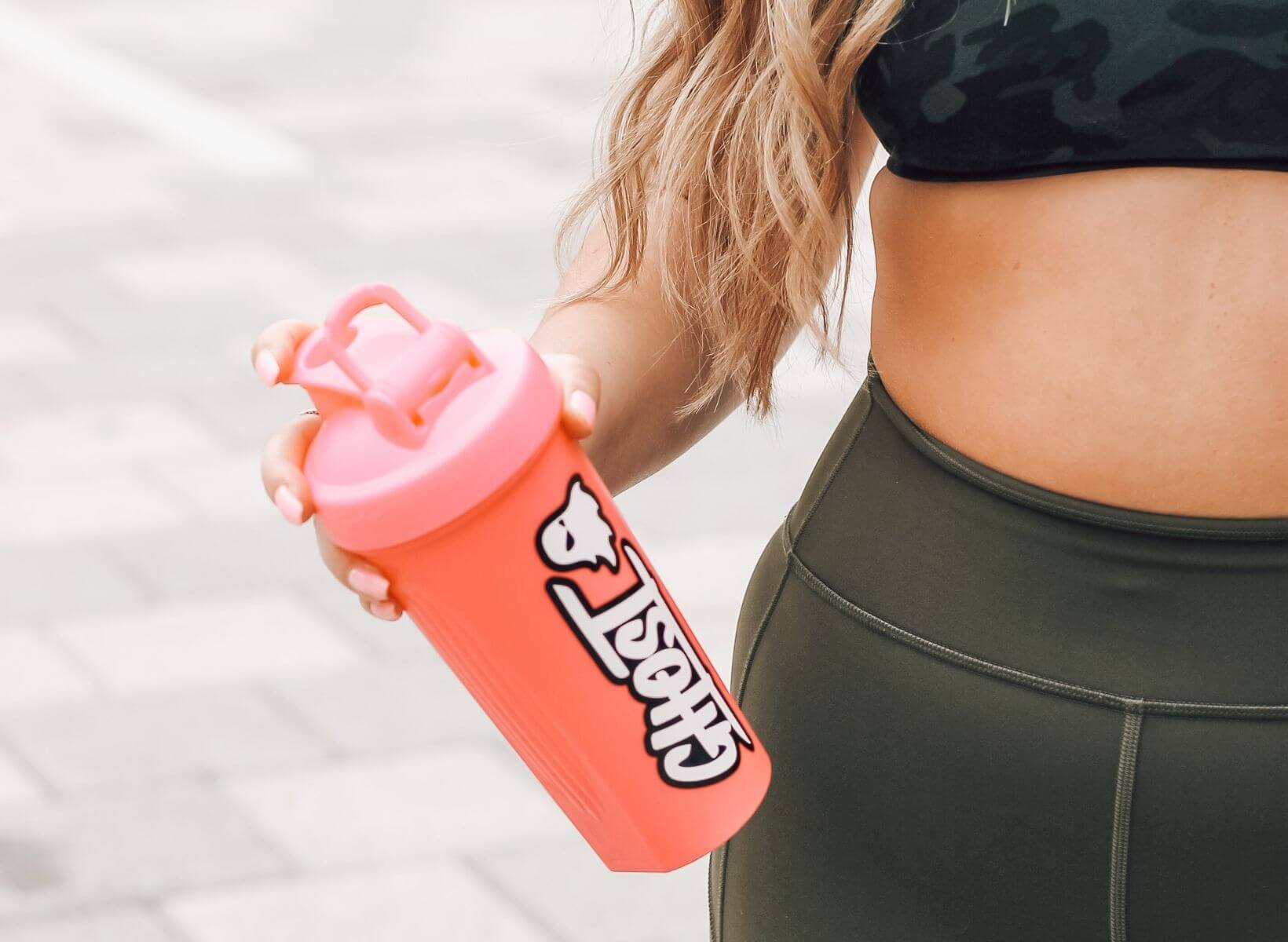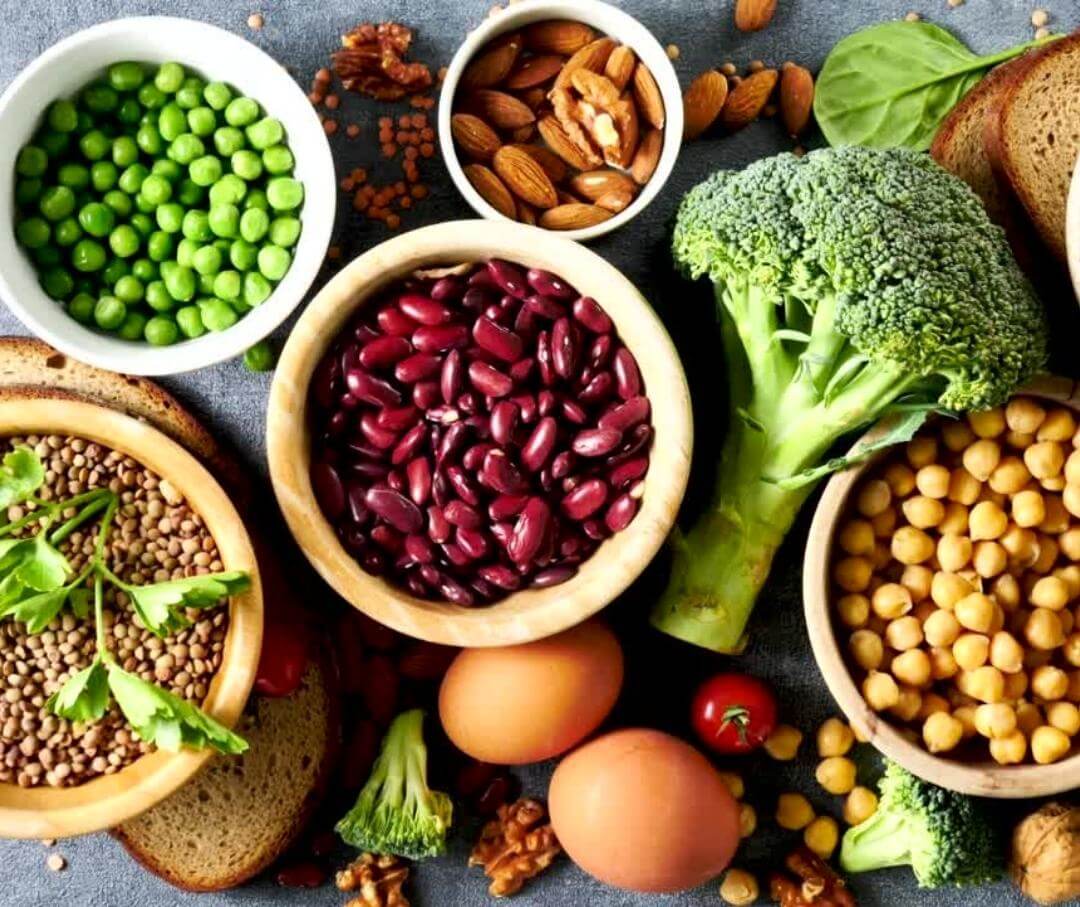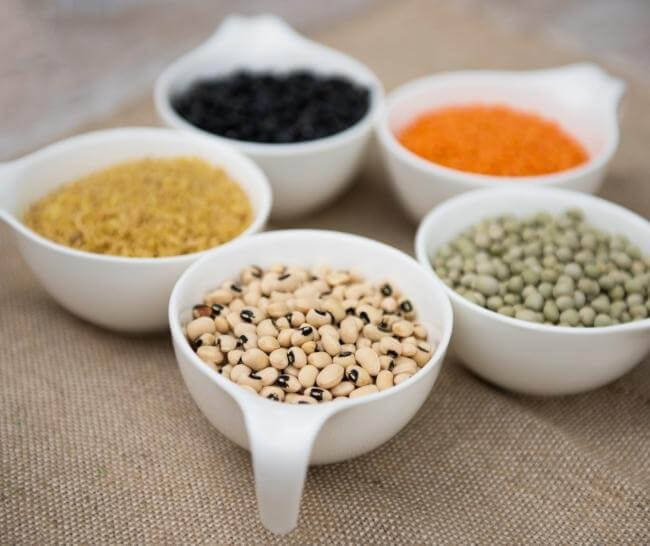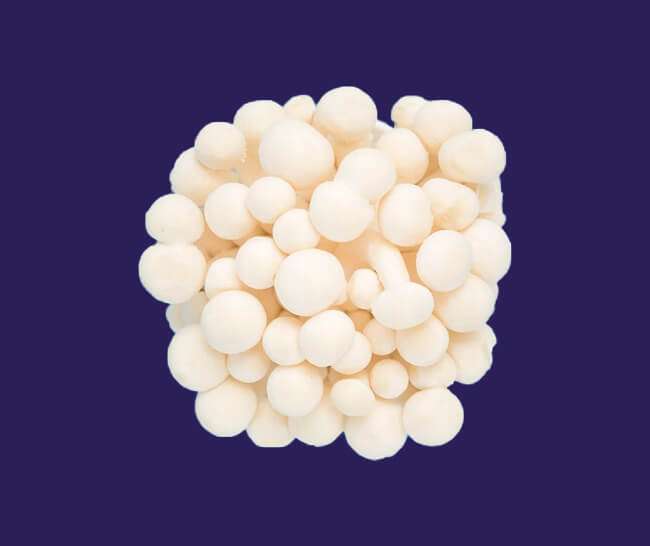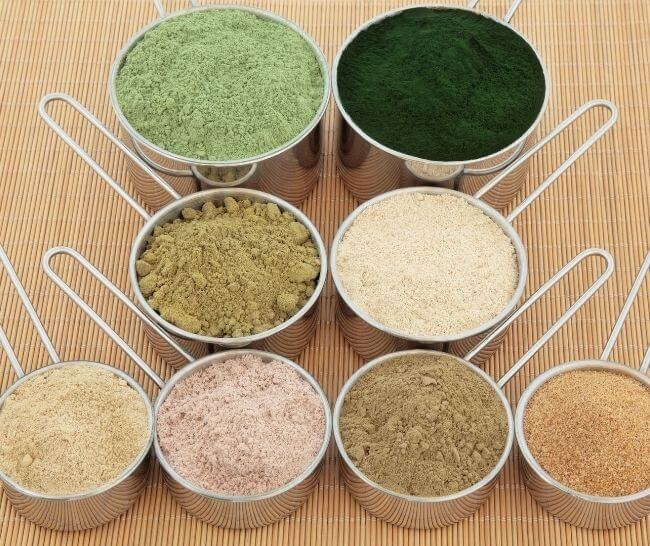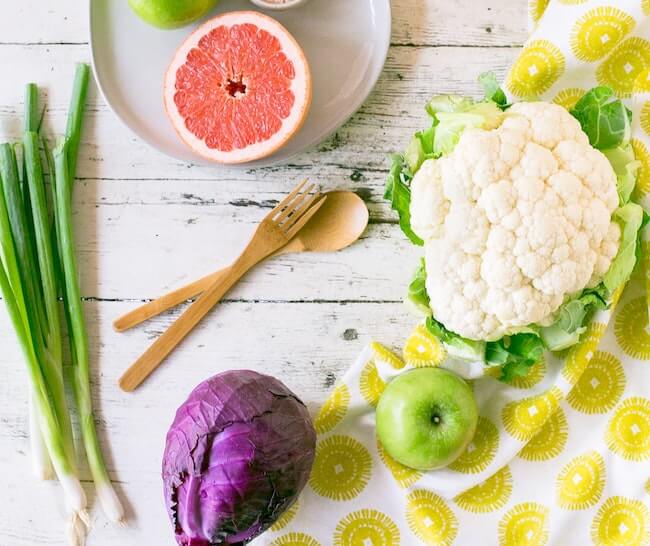In an annual survey of American consumers in 2021, 24% of adults reported eating more plant-based products than the previous year, and 60 percent of people globally have said they have or are more likely to purchase plant-based protein products compared to two years ago.1 ,2
With the appeal of plant-based eating and vegetarian diets growing, so is the availability of processed plant-based protein options.3 These products are great to have on hand when you are crunched for time but may have a lot of added fat, sugars and salt that you don’t need. The good news is that there are many unprocessed, or lightly processed, vegetarian and vegan protein sources you probably already have in your pantry. Even better, these options are easy to prepare and things you should try to reach for first.
Why is Protein Important?
Let’s start at the beginning. What is protein and why is getting enough of it a concern for vegetarians and vegans?
What is Protein?
Protein is one of the three macronutrients in our diet along with carbohydrates and fat. These macronutrients all work together.4 They give your body energy, support your organs, build tissues, and just generally keep your body running.
Protein is essential for just about every process in our body. Among other things, some of the main functions of protein are:
- It helps build and repair our muscles and tissues.
- It helps form our bones, hair, skin, and nails.
- It is the main component of the enzymes and hormones that keep our bodies functioning
- It helps form the communication system in our brains.
We often think of protein as just one nutrient when in fact proteins are made up of 20 different amino acids.4 These amino acids are the building blocks of protein. They are put together in different combinations to form proteins that have specific functions in our body.4
Think about it this way: it's kind of the same idea for how letters are put together to form words. Different combinations of letters form different words with different meanings. Each amino acid combination forms a unique protein that has a different and essential function in your body.
<p><strong></strong><p class="pro-tip"><strong>Learn about </strong><a href=protein-for-weight-loss>why protein helps with weight loss</a></p></p>
Why is Protein a Concern for Vegetarians and Vegans?
So why is protein a concern for vegans? It comes down to one simple thing: most plant-based proteins are missing some of these amino acids.4
Eleven of the 20 amino acids can be made by your body. The other nine have to come from the food you eat. These nine are called “essential amino acids.” Animal proteins contain all nine. But plant proteins are typically missing at least one of them.4
There are a few plant products such as soy, quinoa, and hemp that contain all nine essential amino acids.5,6,7 But the majority of plant proteins only contain some and they vary, so each plant provides something different.
So what does this mean if you follow a vegan diet? You have to build your own complete package of amino acids. You do this by eating a variety of proteins throughout the day.
Why Is Unprocessed Protein Important for a Healthy Diet?
Protein is essential for a healthy diet but as we’ve reviewed, when you follow a vegetarian or vegan diet, it can be challenging to eat enough.8 The good news is that eating a variety of plant-based foods throughout the day will give you all you need.
It’s not just protein that makes these foods so good for you. They are also packed full of vitamins, minerals, antioxidants, and other nutrients that are critical for good health. While vegan and vegetarian diets tend to be rich in many nutrients, there are some vitamins and minerals that may be difficult to eat enough of.8
Nutrients that are often lacking in vegetarian diets include iron, calcium, vitamin B12, omega-3 fatty acids, vitamin D, and zinc. 8, 10 While these nutrients are readily found in animal proteins, they can be a bit more challenging to find in plant-based proteins.
Eating a variety of plant-based proteins throughout the day will ensure that you get all the nutrition you need and you won’t end up eating a lot of added sugar, salt, and fats that aren’t so good for you.
List: Best Protein Options for Vegans and Vegetarians
- Soy
- Nutritional Yeast
- Dried Beans and Peas
- Nuts and Nut Butter
- Seitan
- Ancient Grains - Quinoa, Farro, Amaranth
- Sprouted Grains
- Chia Seeds and Hemp Seeds
- Vegetables
<p class="pro-tip">Read more about the best nuts for blood sugar</p>
Soy
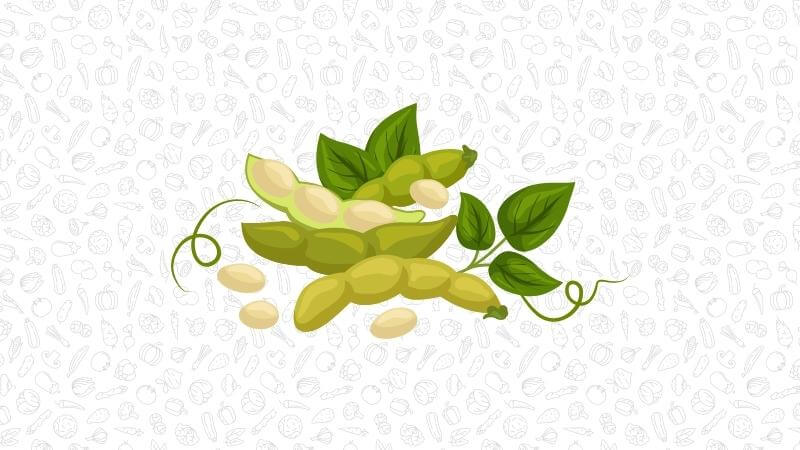
Soy is one of the few plant-based, “complete” proteins. (5) Meaning soy-based foods contain all nine essential amino acids. It is also a highly absorbable plant protein. Soy products offer many health benefits and The Dietary Guidelines for Americans 2020 – 2025 recommend and encourage the consumption of soy foods as part of a healthy diet. 9
There are many unprocessed or “lightly processed” soy products available. Some of the best options include soybeans (edamame), tofu, tempeh, and soy milk.
Soy products are a great source of protein and are a great way to replace meat and dairy in your diet. They are rich in fiber, calcium, and iron.5 These products and soy protein powders also contain isoflavones, a plant estrogen-like substance that has many health-promoting properties and has been shown to reduce the risk of heart disease, diabetes, and some types of cancer. 5
<p class="pro-tip">Tip: Add silken tofu to smoothies in the morning or toss some cubes of tofu into a stir-fry for dinner.</p>
Top Nutritional Benefits of Soy
- Contains all nine essential amino acids
- Low glycemic index
- Highly absorbable
- Can replace meat and dairy in your diet
- Rich in fiber, calcium, and iron
Nutritional Yeast
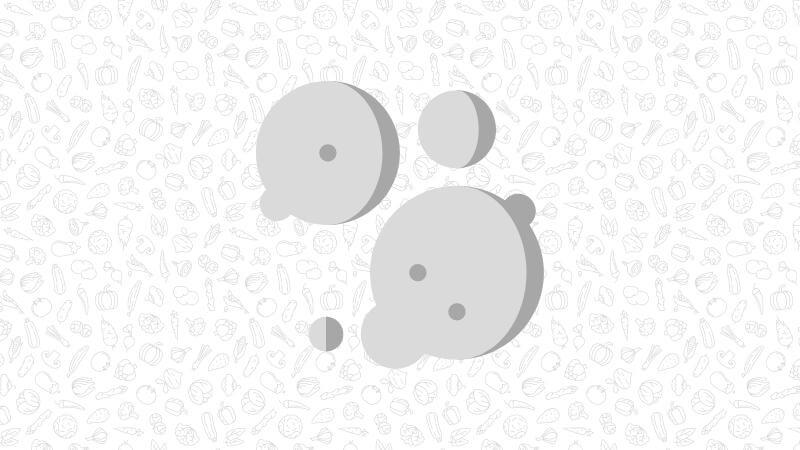
Nutritional yeast is a great way to add high-quality protein to a vegan diet. It has all nine essential amino acids, but an even better benefit is that it contains vitamin B12.11 This vitamin is one that is hard to come by in vegetarian diets which makes nutritional yeast an important plant-based protein for vegans.
Just 2 tablespoons a day will add 6 grams of protein and provide more than 100 percent of the recommended daily allowance for vitamin B12.11
An added benefit of nutritional yeast is that it adds a savory, almost cheese-like flavor to food. It’s an easy way to add protein and flavor to vegetarian meals.
<p class="pro-tip">Tip: Add nutritional yeast to sauces to thicken them and add a cheesy flavor. Sprinkle a tablespoon on a salad or on top of pasta for an added protein boost. </p>
Top Benefits of Nutritional Yeast
- Contains all nine essential amino acids
- Low glycemic index
- Rich in vitamin B12
Beans and Peas
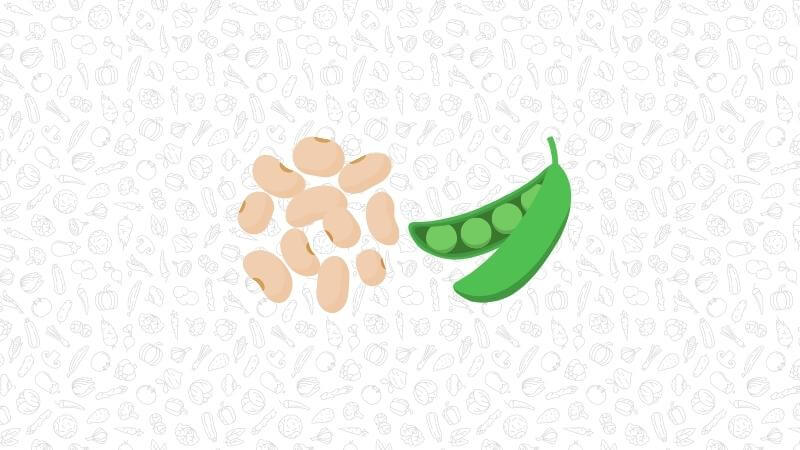
These pantry staples are great to have on hand for anyone following a vegetarian or vegan diet. Just ½ cup of cooked beans has 7 and 8 grams of protein and is an excellent source of lysine, an amino acid in short supply in other non-animal protein options.12
Along with their high protein content, beans are a great source of iron, folate, fiber, and antioxidants.
While high in carbohydrates, beans are low glycemic foods which may help with keeping your blood sugar stable.12
- Learn about glycemic index and glycemic load
<p class="pro-tip">Tip: Dried beans and peas like lentils, black beans, and split peas are often added to soups and stews but they can do so much more. Puree garbanzo beans or cannellini beans with some garlic, herbs, and EVOO for a quick vegetable dip or sandwich spread.</p>
- Read more about the health benefits of beans and legumes
Top Nutritional Benefits of Beans and Peas
- Low glycemic index
- Good source of lysine
- Rich in iron, folate, fiber, and antioxidants
Nuts and nut butter
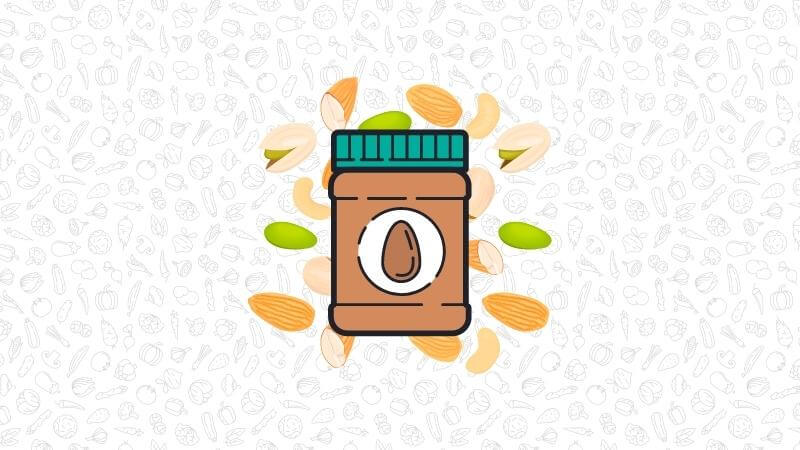
Nuts and nut butter are other pantry staples that make it easy to add protein to meals. While nuts tend to be high in fat, they are low-glycemic, healthy fats. Walnuts also contain the omega-3 fatty acid, ALA. Nuts also contain zinc and iron, two other minerals important for vegetarians.
A serving is one ounce of nuts or 2 tablespoons of nut butter which gives you between 4 and 8 grams of protein.13
<p class="pro-tip">Tip: Mix 2 tablespoons of nut butter into your morning oatmeal to add 7 to 8 grams of protein to your breakfast.</p>
Top Nutritional Benefits of Nuts
- Low glycemic index
- Rich in iron and zinc
- Walnuts contain ALA (omega-3 fatty acid)
<p class="pro-tip"><strong>Learn more about </strong> <a href=metabolic-health-nut-butters>how nut butters can support metabolic health</a>.</p>
Seitan
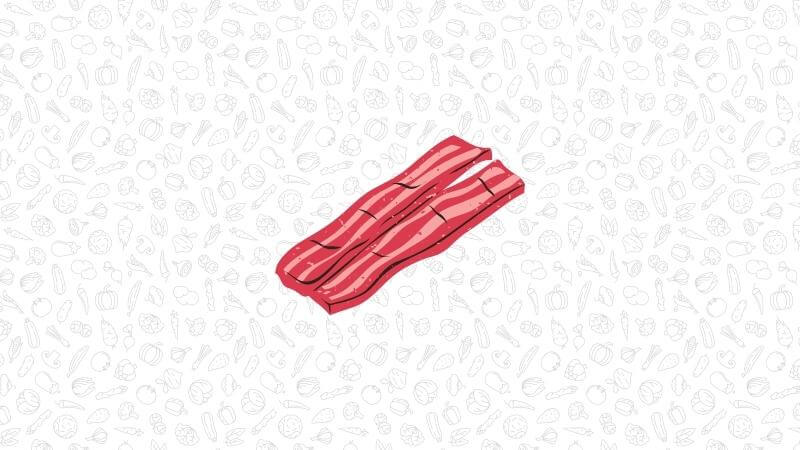
This “meat-like” product is made from something called vital wheat gluten. Wheat flour is hydrated and processed and the gluten is pulled from it to form seitan. It is commonly used in processed plant protein products to form shapes that resemble a variety of animal products.
You can also find packaged forms of plain seitan available in grocery stores, or make it at home using vital wheat protein flour.
If you want to buy Seitan, look for varieties that don’t have a lot of added salt or flavors, and then season it yourself.
Seitan has a mild savory flavor and like tofu, it takes on the flavors of the dish it is being used in. Besides its protein content, it also has iron, selenium, and a little calcium.14
Because it is made from wheat, it is not gluten-free so if you have a wheat allergy or celiac disease you should not use seitan.
<p class="pro-tip">Tip: Seitan is easy to grill and makes a good burger alternative. Brush it with some teriyaki sauce or spicy buffalo sauce for a fun cookout meal.</p>
Top Nutritional Benefits of Seitan
- Rich in iron and selenium
- Contains calcium
{{mid-cta}}
“Ancient Grains” - Quinoa, Farro, Amaranth
.jpg)
Ancient grains are grains that have been around for centuries, but only recently become popular in the west. These grains are whole grains. That means they have the germ and much of the endosperm remains. They are a great source of fiber, vitamins and minerals, and protein.
Some grains like quinoa and farro contain all nine essential amino acids making them a complete protein.6 Others contain many of the essential amino acids but may be lacking in one or two.
It’s a great idea to combine quinoa, farro, and/or amaranth with other plant-based proteins like beans or nuts and seeds to make a complete protein.
<p class="pro-tip">Tip: Cook up a batch of grains over the weekend and then use them throughout the week in salads, soups, or grain bowls!</p>
Top Nutritional Benefits of "Ancient Grains"
- Quinoa and farro contain all nine essential amino acids
- Can be low glycemic diet-friendly
- Rich in fiber, vitamins, and minerals
<p class="pro-tip"><strong>Learn more about </strong> <a href=quinoa-weight-loss>how quinoa supports weight loss</a>.</p>
Sprouted Grains
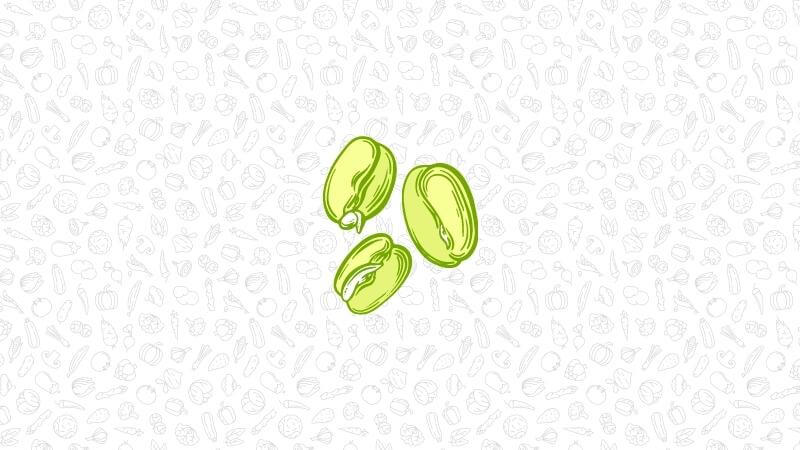
Sprouted grains have become very popular recently and for good reason. They are filled with vitamins, minerals, and phytochemicals. A sprouted grain is a grain that contains all the original bran, germ, and endosperm, and the “sprout” does not exceed the length of the seed.15
In addition to their fiber content and increased levels of antioxidants, sprouted grains are a good source of protein. Sprouted grains contain higher levels of essential amino acids and they are easily absorbed. They are also higher in iron and zinc than regular grains.15
Ezekiel Bread
You may have heard of Ezekiel bread which is made with sprouted grains and provides 4 grams of protein per slice. An added benefit of this bread is that it is low GI so shouldn’t raise your blood sugar as much as regular bread.
- Read more about the best breads for blood sugar levels
<p class="pro-tip">Tip: Roast sprouted grains in the oven and add them on top of salads or soups for a nice crunch. If using them raw, make sure you store them in a cool place and washed well before eating them.</p>
Top Nutritional Benefits of Sprouted Grains
- Rich in vitamins, minerals, and phytochemicals
- Contain antioxidants
- Higher in iron and zinc than regular grains
- Low glycemic
- Low in saturated fats
Chia Seeds and Hemp Seeds
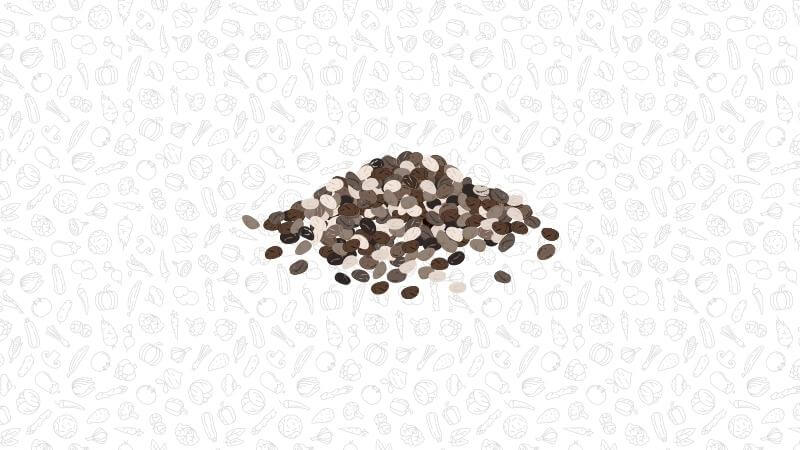
Chia and hemp seeds are two other plant-based complete proteins, containing all nine essential amino acids. Both are also rich in nutrients such as potassium, magnesium, calcium, iron, vitamin E, and fiber, as well as the plant-based omega-3 fatty acid, ALA.7
<p class="pro-tip">Tip: Soak a tablespoon of chia or flax seeds in 2 ½ tablespoons of water and use as a quick egg substitute. Use it to replace the egg in muffins and pancakes or as a binder when making black bean burgers. </p>
Top Nutritional Benefits of Chia Seeds and Hemp Seeds
- Contain all nine essential amino acids
- Rich in nutrients like potassium, magnesium, calcium, iron, vitamin E, and fiber
- Rich in ALA (omega-3 fatty acid)
- Low glycemic
- Can be a substitute for eggs in baking recipes
<p class="pro-tip"><strong>Learn about </strong><a href=chia-seeds-weight-loss>how chia seeds can help with weight loss</a></p>
Vegetables
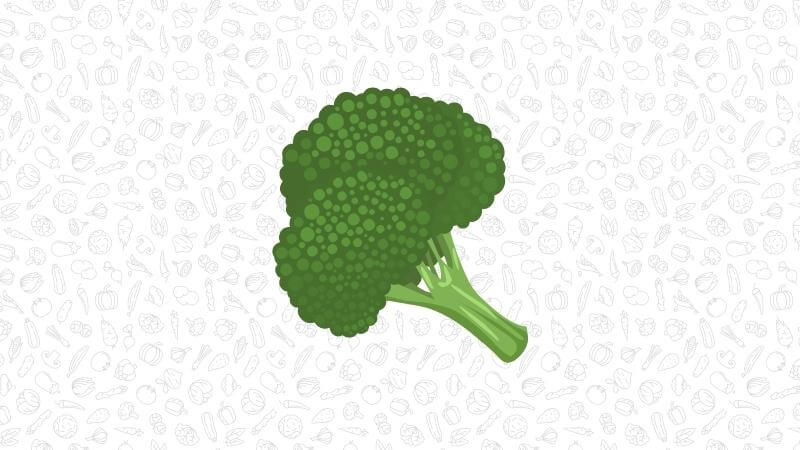
You may never have thought of vegetables as being a good source of protein but they all contain some. Green peas, green leafy vegetables, broccoli, sweet potatoes, corn, and avocados can have between 2 and 8 grams of protein per cup. Many vegetables also contain iron, selenium, and calcium, important nutrients for vegetarians.16
<p class="pro-tip">Tip: Add protein-rich vegetables to a grain bowl like kale and corn and top with a tablespoon of chopped nuts for an easy, protein-packed lunch.</p>
Keep your pantry stocked with these easy-to-use, unprocessed proteins. You'll be able to pull a quick, healthy, and satisfying meal together in no time.
Benefits of Vegetables (for Vegetarians and Vegans)
- Rich in iron, selenium, and calcium
- Many are low glycemic (Read about the best low-glycemic vegetables)
<p class="pro-tip"><strong>Keep reading about </strong> <a href=corn-blood-sugar-weight-loss>how corn affects blood sugar</a>.</p>
- Item 1
- Item 2
- item 3
Topics discussed in this article:
References
- IFIC 2021 Food and Health Survey
- Neilsen 2021 Health and Wellness Survey
- https://www.plantbasedfoods.org/2021-u-s-retail-sales-data-for-the-plant-based-foods-industry/
- https://www.ncbi.nlm.nih.gov/books/NBK234922/
- https://www.ncbi.nlm.nih.gov/pmc/articles/PMC5793271/
- https://www.ncbi.nlm.nih.gov/pmc/articles/PMC7915320/
- https://pubmed.ncbi.nlm.nih.gov/23088580/
- https://www.jandonline.org/article/S2212-2672(16)31192-3/fulltext
- https://www.dietaryguidelines.gov/sites/default/files/2020-12/Dietary_Guidelines_for_Americans_2020-2025.pdf
- https://www.ncbi.nlm.nih.gov/pmc/articles/PMC5598028/
- https://fdc.nal.usda.gov/fdc-app.html#/food-details/2194488/nutrients
- https://academic.oup.com/ajcn/article/100/suppl_1/437S/4576589?login=false
- https://fdc.nal.usda.gov/fdc-app.html#/?query=Nuts
- https://fdc.nal.usda.gov/fdc-app.html#/food-details/168147/nutrients
- https://www.ncbi.nlm.nih.gov/pmc/articles/PMC6413227/
- https://fdc.nal.usda.gov/

.jpg)
.jpg)

